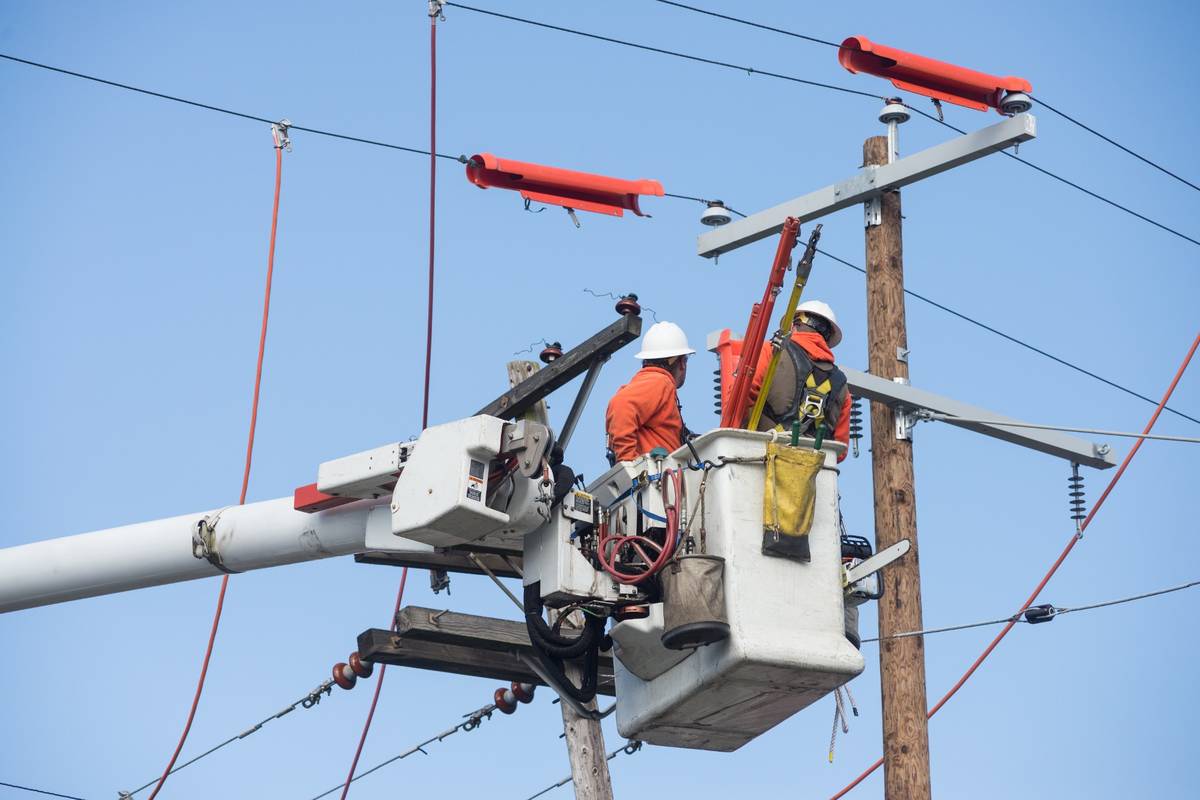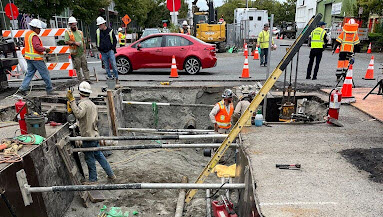The old playbook is failing. With a surge in contractor use and unprecedented project volume, the hidden costs of outdated processes are no longer sustainable. Here’s how to reclaim control.
It’s 7 a.m. Your phone is already buzzing. A crew is on-site, but the design they have doesn’t match the reality on the ground. Another team is waiting on a permit that should have been cleared yesterday. Meanwhile, a project stakeholder is emailing for a status update on a critical work order, and the only way to get an answer is to start a chain of calls and emails, hoping to track down the right field supervisor.
If this sounds familiar, you’re not alone. This is the daily reality for construction managers across the electric utility industry. You’re at the center of a perfect storm, tasked with managing a historic surge in T&D construction while relying on processes and tools that were never designed for this level of complexity. And to keep up, you are relying more heavily on contractors than ever. But this new, blended workforce model has exposed a critical flaw in the system: an information black hole.
The Hidden Enemy: Your Information Black Hole
For most utilities, the status of any project is locked away in conversations, emails, and spreadsheets. Critical asset data is trapped on paper forms in the cab of a truck, waiting weeks or even months to be manually entered into the GIS and Work Management System (WMS).
This delay creates a dangerous gap between the work happening in the field and the data available in the office. This isn't just an inconvenience; it's a system-wide liability with severe consequences.
The Real-World Costs of Your Data Gap
- Safety Risks Become Unacceptable When a crew digs without knowing an underground line was installed just last week, the consequences can be catastrophic. Delays in updating GIS put your team members in harm’s way, turning every excavation into a gamble.
- Operational Blind Spots Lead to Flawed Decisions An Outage Management System (OMS) that doesn’t know about newly installed assets is a broken system. When an outage occurs, crews are sent on wild goose chases, and recovery decisions are based on inaccurate data, extending downtime and frustrating customers.
- Design Accuracy Plummets, Wasting Time and Money Future designs based on outdated system maps are doomed from the start. This leads to endless cycles of rework.
- Financial Drag from "Ghost Assets" in CWIP Every day a completed work order remains "open," its costs accumulate in Construction Work in Progress (CWIP). These delays directly impact your utility's financial health, slowing down cost recovery and creating a drag on the balance sheet. When your closeout process takes 90 to 180 days, you are leaving millions on the table.
The Turning Point: Introducing Digital Construction Management
To escape this cycle, you don’t need another siloed mobile app or a better spreadsheet template. You need a fundamental shift in how you manage construction. You need Digital Construction Management (DCM).
Locusview’s DCM platform is designed to close the information black hole for good. It provides a single source of truth that connects every stakeholder—from the construction manager to the contractor crew lead—in real-time.
Imagine a world where you can:
- Know Everything, Instantly. See real-time progress of every work order, every asset installed, and the exact location of every crew, all from a single dashboard. No more phone tag, no more chasing down updates.
- Eliminate the Closeout Bottleneck. Slash your work order closeout times from 90-180 days to just 2-5 days. Locusview ensures high-fidelity data is captured correctly the first time and seamlessly updated across your GIS, WMS, and financial systems.
- Trust Your Maps Again. With as-built data updated in near real-time, your GIS becomes a reliable, accurate reflection of your network. This empowers your design, operations, and field teams to work with confidence.
- Vaporize Unnecessary CWIP Charges. By closing out projects in days instead of months, you can ensure costs are promptly removed from CWIP and unitized into the rate base, dramatically improving your utility’s financial performance.
- End Costly Rework. Field crews capture all required asset data on the first visit, eliminating the need for expensive return trips to collect missing information for downstream systems like ADMS, OMS, and DERMS.
Digital Construction Management is more than just a tool; it’s a transformation. It turns the chaotic, reactive role of a construction manager into a proactive, strategic one. It frees you from the administrative burden of chasing information and empowers you with the real-time visibility and data accuracy needed to manage today’s high-stakes T&D landscape.
Stop managing chaos. Start driving progress.
Ready to see how Digital Construction Management can transform your operations? Schedule a Demo with Locusview Today
The old playbook is failing. With a surge in contractor use and unprecedented project volume, the hidden costs of outdated processes are no longer sustainable. Here’s how to reclaim control.
It’s 7 a.m. Your phone is already buzzing. A crew is on-site, but the design they have doesn’t match the reality on the ground. Another team is waiting on a permit that should have been cleared yesterday. Meanwhile, a project stakeholder is emailing for a status update on a critical work order, and the only way to get an answer is to start a chain of calls and emails, hoping to track down the right field supervisor.
If this sounds familiar, you’re not alone. This is the daily reality for construction managers across the electric utility industry. You’re at the center of a perfect storm, tasked with managing a historic surge in T&D construction while relying on processes and tools that were never designed for this level of complexity. And to keep up, you are relying more heavily on contractors than ever. But this new, blended workforce model has exposed a critical flaw in the system: an information black hole.
The Hidden Enemy: Your Information Black Hole
For most utilities, the status of any project is locked away in conversations, emails, and spreadsheets. Critical asset data is trapped on paper forms in the cab of a truck, waiting weeks or even months to be manually entered into the GIS and Work Management System (WMS).
This delay creates a dangerous gap between the work happening in the field and the data available in the office. This isn't just an inconvenience; it's a system-wide liability with severe consequences.
The Real-World Costs of Your Data Gap
- Safety Risks Become Unacceptable When a crew digs without knowing an underground line was installed just last week, the consequences can be catastrophic. Delays in updating GIS put your team members in harm’s way, turning every excavation into a gamble.
- Operational Blind Spots Lead to Flawed Decisions An Outage Management System (OMS) that doesn’t know about newly installed assets is a broken system. When an outage occurs, crews are sent on wild goose chases, and recovery decisions are based on inaccurate data, extending downtime and frustrating customers.
- Design Accuracy Plummets, Wasting Time and Money Future designs based on outdated system maps are doomed from the start. This leads to endless cycles of rework.
- Financial Drag from "Ghost Assets" in CWIP Every day a completed work order remains "open," its costs accumulate in Construction Work in Progress (CWIP). These delays directly impact your utility's financial health, slowing down cost recovery and creating a drag on the balance sheet. When your closeout process takes 90 to 180 days, you are leaving millions on the table.
The Turning Point: Introducing Digital Construction Management
To escape this cycle, you don’t need another siloed mobile app or a better spreadsheet template. You need a fundamental shift in how you manage construction. You need Digital Construction Management (DCM).
Locusview’s DCM platform is designed to close the information black hole for good. It provides a single source of truth that connects every stakeholder—from the construction manager to the contractor crew lead—in real-time.
Imagine a world where you can:
- Know Everything, Instantly. See real-time progress of every work order, every asset installed, and the exact location of every crew, all from a single dashboard. No more phone tag, no more chasing down updates.
- Eliminate the Closeout Bottleneck. Slash your work order closeout times from 90-180 days to just 2-5 days. Locusview ensures high-fidelity data is captured correctly the first time and seamlessly updated across your GIS, WMS, and financial systems.
- Trust Your Maps Again. With as-built data updated in near real-time, your GIS becomes a reliable, accurate reflection of your network. This empowers your design, operations, and field teams to work with confidence.
- Vaporize Unnecessary CWIP Charges. By closing out projects in days instead of months, you can ensure costs are promptly removed from CWIP and unitized into the rate base, dramatically improving your utility’s financial performance.
- End Costly Rework. Field crews capture all required asset data on the first visit, eliminating the need for expensive return trips to collect missing information for downstream systems like ADMS, OMS, and DERMS.
Digital Construction Management is more than just a tool; it’s a transformation. It turns the chaotic, reactive role of a construction manager into a proactive, strategic one. It frees you from the administrative burden of chasing information and empowers you with the real-time visibility and data accuracy needed to manage today’s high-stakes T&D landscape.
Stop managing chaos. Start driving progress.
Ready to see how Digital Construction Management can transform your operations? Schedule a Demo with Locusview Today








